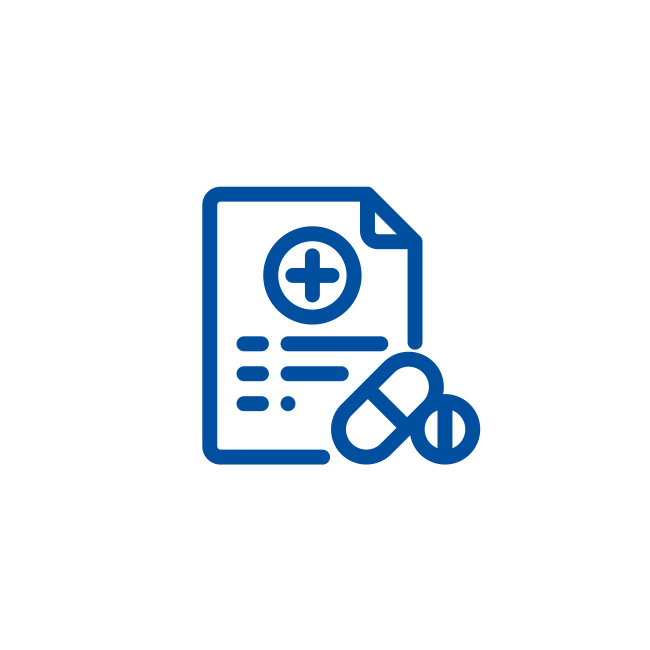
Amipryd, 100 mg: one tablet contains 100 mg of amisulpride (Amisulpridum).
Excipient with known effect: lactose monohydrate.
One Amipryd, 100 mg tablet contains 65 mg of lactose.
Amipryd is used in the treatment of acute and chronic schizophrenia with positive symptoms (such as: delusions, hallucinations, thought disorders, hostility and distrust) and (or) negative symptoms (such as: emotionlessness, emotional and social withdrawal), including also in patients with prevailing negative symptoms.
Hypersensitivity to the active substance or any of the excipients
listed in in sec. 6.1. Prolactin-dependent tumours, e.g. tumour of the pituitary gland such as prolactinoma and breast cancer. Pheochromocytoma. Dzieci przed okresem pokwitania. Children in pre-puberty. In combination with levodopa (see sec. 4.5).
Use in combination with medicinal products which may cause severe heart rhythm disorders such as torsade de pointes, including: class IA antiarrhythmic agents (such as quinidine, disopyramide); class III antiarrhythmic agents (such as amiodarone and sotalol); other drugs such as bepridile, cisapride, sultopride , thioridazin , methadone, intravenous erythromycin, intravenous vincamine, halofantrine , pentamidine, sparfloxacine, antifungal azoles (see sec. 4.5).
This is a drug. For safety, use it according to the package insert and only when necessary. If in doubt, consult your doctor or pharmacist.

phone: (+48 22) 742 00 22
informacjaoleku@hasco-lek.pl
Amipryd, 100 mg: one tablet contains 100 mg of amisulpride (Amisulpridum).
Excipient with known effect: lactose monohydrate.
One Amipryd, 100 mg tablet contains 65 mg of lactose.
Amipryd is used in the treatment of acute and chronic schizophrenia with positive symptoms (such as: delusions, hallucinations, thought disorders, hostility and distrust) and (or) negative symptoms (such as: emotionlessness, emotional and social withdrawal), including also in patients with prevailing negative symptoms.
Hypersensitivity to the active substance or any of the excipients
listed in in sec. 6.1. Prolactin-dependent tumours, e.g. tumour of the pituitary gland such as prolactinoma and breast cancer. Pheochromocytoma. Dzieci przed okresem pokwitania. Children in pre-puberty. In combination with levodopa (see sec. 4.5).
Use in combination with medicinal products which may cause severe heart rhythm disorders such as torsade de pointes, including: class IA antiarrhythmic agents (such as quinidine, disopyramide); class III antiarrhythmic agents (such as amiodarone and sotalol); other drugs such as bepridile, cisapride, sultopride , thioridazin , methadone, intravenous erythromycin, intravenous vincamine, halofantrine , pentamidine, sparfloxacine, antifungal azoles (see sec. 4.5).
Przedsiębiorstwo Produkcji
Farmaceutycznej
Hasco-Lek S.A.
st. Żmigrodzka 242e
51-131 Wroclaw
phone: (+48) 71 352 95 22
fax: (+48) 71 352 76 36
hasco@hasco-lek.pl
| Cookie | Duration | Description |
|---|---|---|
| cookielawinfo-checkbox-advertisement | This cookie, set by the GDPR Cookie Consent plug-in, is used to record user consent to cookies in the "Advertising" category. | |
| cookielawinfo-checkbox-analytics | A cookie used to remember the acceptance of cookies from the "Analytics" category. | |
| cookielawinfo-checkbox-functional | The cookie is set by the RODO cookie consent to record the user's consent to cookies in the "Functional" category. | |
| cookielawinfo-checkbox-necessary | This cookie, set by the GDPR Cookie Consent plug-in, is used to record user consent to cookies in the "Necessary" category. | |
| cookielawinfo-checkbox-others | Other uncategorized cookies are those that are analyzed and have not yet been categorized. | |
| cookielawinfo-checkbox-performance | This cookie is set by the GDPR Cookie Consent plugin. The cookie is used to store the user's consent to cookies in the "Performance" category. | |
| CookieLawInfoConsent | Records the default button state of the corresponding category and CCPA status. It only works in coordination with the primary cookie. | |
| elementor | This cookie is used by the WordPress theme of the site. It allows the site owner to implement or change the content of the site in real time. | |
| viewed_cookie_policy | Records the user's consent to the use of cookies. It does not store any personal data and is recorded only on the basis of an action performed by the user (consent). |
| Cookie | Duration | Description |
|---|---|---|
| _ga | Used to distinguish between individual users and generate statistics on how the website is used | |
| _ga_* | This cookie is set by Google Analytics 4. It stores and updates a unique value for each page visited and is used to count and track page views. | |
| _gat_UA-* | Google Analytics sets this cookie to track user behavior. | |
| _gid | We use Google Analytics, which collects anonymous information about your visits to the site. These include such info as the sub-pages they viewed, the time they spent on the site, and the transitions between pages. |